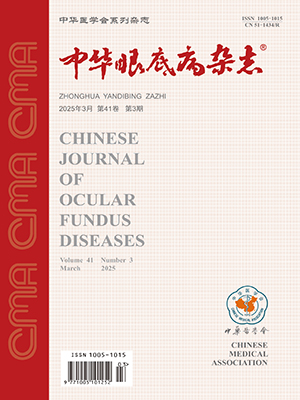Objective To evaluate the clinical efficacy of intravitreal injections of antivascular endothelial growth factor monoclonal antibody ranibizumab in choroidal neovascularization (CNV) secondary to pathologic myopia (PM). Methods This is a prospective, uncontrolled, open-label study. 34 eyes of 34 patients with CNV secondary to PM were included in the study. All affected eye were treated with intravitreal ranibizumab 0.05 ml (10 mg/ml). Before the injection, bestcorrected visual acuity of early treatment of diabetic retinopathy study (ETDRS), noncontact tonometer, ophthalmoscope, fundus photography, fundus fluorescein angiograph (FFA) and optical coherence tomography (OCT) examination were necessary. The initial average letters of ETDRS acuity were 33.85 plusmn;14.67, range from 0 to 69. The initial average central macular thickness (CMT) was(293.41 plusmn;79.45) m, range from 210 m to 543 m. The patients were followed up for 3 to 12 months. Best-corrected visual acuity, OCT and ophthalmoscope examination were assessed monthly. If necessary, FFA was used. The letters of ETDRS acuity and CMT were compared before and after treatment. Results All eyes received an average of 1.68 injections, the final vision of follow-up increased (13.50 plusmn;9.94) letters than before (t=7.92,P=0.00), CMT decreased (71.14 plusmn;72.26) m (t=4.62,P=0.00). There were no systemic or ocular serious side effects during the follow up. Conclusion Intravitreal ranibizumab for pathologic myopia choroidal neovascularization showed visual acuity improvement, retinal thickness reduction and safety.
Citation: 易佐慧子,陈长征,郑红梅,翁铭,曹思. Clinical observation of intravitreal ranibizumab for treatment of choroidal neovascularization secondary to pathologic myopia. Chinese Journal of Ocular Fundus Diseases, 2013, 29(4): 367-371. doi: Copy
Copyright © the editorial department of Chinese Journal of Ocular Fundus Diseases of West China Medical Publisher. All rights reserved




